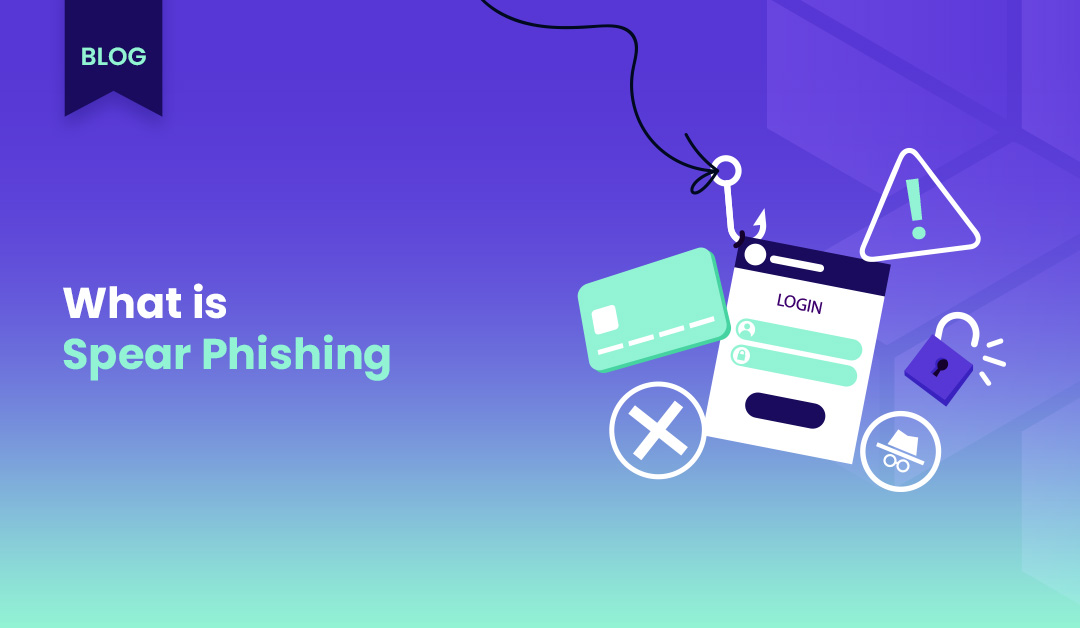Spear Phishing 101: Essential Tips for Recognizing and Avoiding Targeted Scams
What is Spear Phishing? Spear phishing is a highly targeted form of phishing. Unlike general phishing, which casts a wide net, spear phishing focuses on specific individuals or organizations. The goal is to trick the target into revealing sensitive information, such as login credentials or financial details. Attackers use personalized tactics to make their approach […]
Author
Date
Category
All Categories
- AI-powered security
- Attacks & Threats
- Cybersecurity
- Hybrid Cloud
- Network
- Network Firewall
- Network Protection
- News
- Remote Workforce
- Security
- Zero Trust
Contents
Popular Posts
Product
Join the Newsletter

What is Spear Phishing?
Spear phishing is a highly targeted form of phishing. Unlike general phishing, which casts a wide net, spear phishing focuses on specific individuals or organizations. The goal is to trick the target into revealing sensitive information, such as login credentials or financial details. Attackers use personalized tactics to make their approach more convincing and harder to detect.
Differences Between Spear Phishing and General Phishing
Spear phishing differs from general phishing in its focus and execution. While general phishing attacks are broad and often impersonal, spear phishing is precise. Attackers craft messages specifically for the target, using personal information to increase credibility. This makes spear phishing more dangerous and effective than general phishing.
Key Characteristics of Spear Phishing
- Targeted Attacks: Spear phishing attacks are directed at specific individuals or groups, making them more likely to succeed.
- Use of Personal Information: Attackers use personal details, such as names, job titles, or recent activities, to make their messages seem legitimate.
- Attack Methods and Techniques: Spear phishing often involves personalized emails or text messages that appear to come from a trusted source, such as a colleague or a familiar company.
How Spear Phishing Works
Spear phishing typically follows a multi-step process:
- Information Gathering: Attackers research their targets, gathering as much personal information as possible.
- Personalized Emails: Based on the gathered information, attackers craft emails that seem legitimate and relevant to the target.
- Social Engineering Techniques: These emails often employ social engineering tactics, such as creating a sense of urgency, to manipulate the target into taking action.
Examples of Spear Phishing Attacks: Real-Life Examples
Several high-profile cases have highlighted the effectiveness of spear phishing. In one case, attackers targeted a major corporation by sending emails that appeared to be from the CEO. The emails requested sensitive financial information, which was then used to steal millions of dollars. Another example involved hackers posing as IT support, convincing employees to reveal their login details.
How to Protect Against Spear Phishing
- Strong Passwords and Two-Factor Authentication: Always use strong, unique passwords and enable two-factor authentication for added security.
- Being Cautious of Suspicious Emails: Be wary of unexpected emails, text messages, especially those asking for sensitive information or urging immediate action.
- Training and Awareness Programs: Regular training on recognizing phishing attempts can help employees stay vigilant and avoid falling victim to these scams.
What to Do If You’re Targeted by Spear Phishing
- Responding to Suspicious Emails: Do not click on any links or download attachments. Report the email to your IT department immediately.
- Using Security Software and Tools: Ensure your security software is up to date, and use tools that can help detect and block phishing attempts.
- Contacting IT Support: If you suspect you’ve been targeted, contact your IT support team right away. They can help assess the situation and take appropriate action.
Conclusion
Spear phishing is a serious threat that requires vigilance and proactive measures. By understanding what spear phishing is and how it works, you can better protect yourself and your organization. Stay informed, stay cautious, and always prioritize security. For more tips and resources on cybersecurity, visit our website today.
FAQs
Spear phishing is more targeted than regular phishing. While general phishing sends mass emails hoping someone will fall for the scam, spear phishing focuses on specific individuals or organizations. Attackers use personal information to make their attacks seem more legitimate and harder to detect.
Spear phishing often uses personalized emails or messages that appear to come from a trusted source, like a colleague or a familiar company. Attackers gather personal information, such as job titles, names, or recent activities, to craft convincing messages that trick the target into revealing sensitive information.
Look out for emails or messages that ask for sensitive information or urge immediate action. They may use personal details to sound more convincing. Check for minor inconsistencies, such as unusual email addresses, slight variations in URLs, or unexpected requests from known contacts.
While it’s difficult to prevent spear phishing attacks entirely, you can reduce the risk by staying cautious. Use strong, unique passwords and enable two-factor authentication. Regularly update your security software and ensure that all employees receive training on recognizing phishing attempts.
Personal information is the backbone of spear phishing attacks. Attackers use details like your name, job title, or even recent activities to tailor their messages, making them appear more authentic. This personalized approach increases the likelihood of success.
You should regularly update your security practices and software. Make it a habit to review your security protocols at least once a quarter, ensuring that all systems are patched and employees are up-to-date on the latest phishing tactics.
If a spear phishing attack is successful, act quickly. Disconnect the affected systems from the network, change all passwords, and notify your IT security team immediately. You may also need to alert financial institutions and other stakeholders if sensitive data was compromised.
Get Started with Timus
Zero Trust. Adaptive Cloud Firewall. Secure Remote Access. In one.
